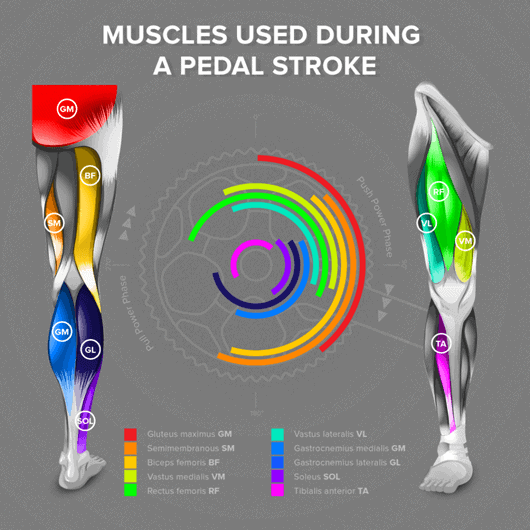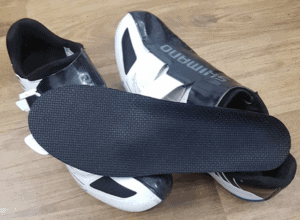Thrive Cycling Orthoses
Optimise your position, enhance comfort and maximise power transfer to the pedal.
Our feet aren’t made to ride a bike! Why?
The foot and lower limb function very differently on the bike when compared to walking and running, hence need to be addressed differently for a number of important reasons.
Pronation vs Supination
Because they are designed to ‘pronate’ (roll in) and ‘re-supinte’ (roll back out) to help us adapt to terrain, act as our bodies natural in-built shock absorbers and then become a rigid level for propulsion.
On the bike however we want stiffness. Pronation and Supination during the pedal stroke, particularly during the push phase results in inefficient power transfer to the pedal and a potential increase in the amount of stress applied to certain tissues and joints.

Open vs Closed Chain
The foot is always the only constant contact point on the bike while riding. You can stand up off the saddle and remove your hands from the handlebars but your foot is always connected to the pedal.
Walking and running are ‘open chain movements’ meaning there is a period where your foot or lower limb is free to move without being connected to anything.
Cycling however involves the foot being in a ‘closed chain’ position, meaning it is connected to the bike at all times. This results in there being a direct effect on the position of the joints above at all times based on what the foot is doing.
During open chain movements the foot can move without when off the ground usually in swing phase without having an effect on the rest of the joints until it hits the ground.
Cycling is a repetitive motion
The pedaling action is repetitive. Now imagine you avg a cadence of 90 RPM for 60 minutes.
That is 5400 revolutions an hour. Doing that for hours and hours in the wrong position puts lots repetitive stress on our feet and legs. Reduce your risk of injury by reducing the amount of stress on your tissues.
Pressure Distribution
The ball of the foot cops most of the pressure when cycling and often leads to discomfort and a reduction in performance.
Cycling orthoses can reduce tissue stress by unloading areas of high pressure.
Our Cycling Orthoses Specialists
Caleb McInnes
Maximise Comfort
Podiatrist prescribed and fitted to reduced unwanted pressure.
Efficient Power Transfer
Maximise Power Transfer to the pedal

Thin and Lightweight
Carbon Fiber provides the best combination of weight and stiffness.
Optimise Function
Customised to stiffen the foot optimising function and performance.

